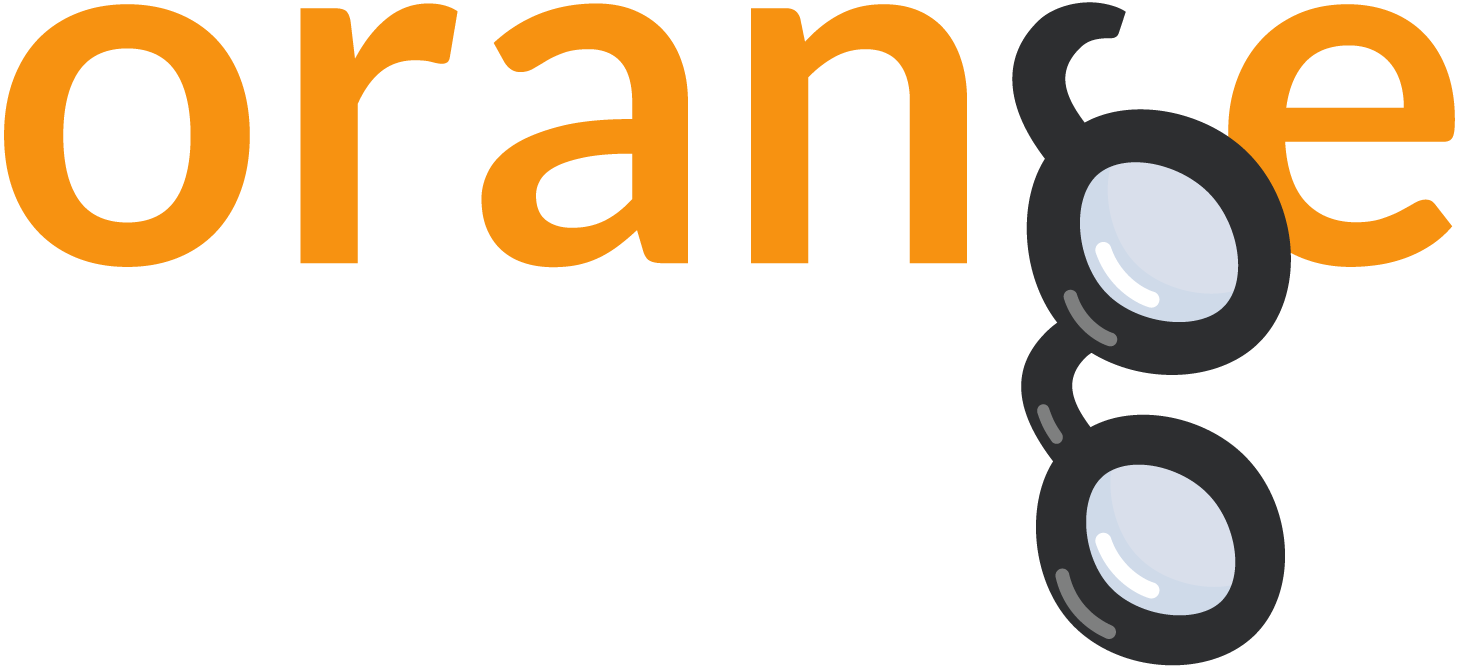Orange Blog
By: AJDA, Jul 10, 2015
Learn with Paint Data
Paint Data widget might initially look like a kids’ game, but in combination with other Orange widgets it becomes a very simple and useful tool for conveying statistical concepts, such as k-means, hierarchical clustering and prediction models (like SVM, logistical regression, etc.). The widget enables you to draw your data on a 2-D plane. You can name the x and y axes, select the number of classes (which are represented by different colors) and then position the points on a graph.
By: AJDA, Jul 3, 2015
Support vectors output in SVM widget
Did you know that the widget for support vector machines (SVM) classifier can output support vectors? And that you can visualise these in any other Orange widget? In the context of all other data sets, this could provide some extra insight into how this popular classification algorithm works and what it actually does. Ideally, that is, in the case of linear seperability, support vector machines (SVM) find a **hyperplane with the largest margin **to any data instance.
By: LAN, May 5, 2015
Working with SQL data in Orange 3
Orange 3 is slowly, but steadily, gaining support for working with data stored in a SQL database. The main focus is to allow huge data sets that do not fit into RAM to be analyzed and visualized efficiently. Many widgets already recognize the type of input data and perform the necessary computations intelligently. This means that data is not downloaded from the database and analyzed locally, but is retained on the remote server, with the computation tasks translated into SQL queries and offloaded to the database engine.
By: BIOLAB, Apr 29, 2014
Viewing Images
I am lately having fun with Image Viewer. The widget has been recently updated and can display images stored locally or on the internet. But wait, what images? How on earth can Orange now display images if it can handle mere tabular or basket-based data? Here’s an example. I have considered a subset of animals from the [download id=“864”] data set (comes with Orange installation), and for demonstration purposes selected only a handful of attributes.
By: BIOLAB, Dec 20, 2013
Paint Your Data
One of the widgets I enjoy very much when teaching introductory course in data mining is the Paint Data widget. When painting in this widget I would intentionally include some clusters, or intentionally obscure them. Or draw them in any strange shape. Then I would discuss with students if these clusters are identified by k-means clustering or by hierarchical clustering. We would also discuss automatic scoring of the quality of clusters, come up with the idea of a silhouette (ok, already invented, but helps if you get this idea on your own as well).
By: BIOLAB, Sep 7, 2011
3D Visualizations in Orange
Over the summer I worked (and still do) on several new 3D visualization widgets as well as a 3D plotting library they use, which will hopefully simplify making more widgets. The library is designed to be similar in terms of API to the new Qt plotting library Noughmad is working on. The library uses OpenGL 2/3: since Khronos deprecated parts of the old OpenGL API (particularly immediate mode and fixed-function functionality) care has been taken to use only capabilities less likely to go away in the years to come.
By: BIOLAB, Sep 3, 2011
GSoC Review: Visualizations with Qt
During the course of this summer, I created a new plotting library for Orange plot, replacing the use of PyQwt. I can say that I have succesfully completed my project, but the library (and especially the visualization widgets) could still use some more work. The new library supports a similar interface, so little change is needed to convert individual widgets, but it also has several advantages over the old implementation:
By: MARKO, Aug 19, 2011
Golden (sublime) triangles in Orange
Hand in hand with the development of the new visualization framework and the financial crisis we are putting some gold into Orange. The arrows at the ends of the axes are, as of today, small golden triangles. See the changes in owaxis.py! - path.moveTo(0, 3) - path.lineTo(0, -3) - path.lineTo(5, 0) + path.moveTo(0, 3.09) + path.lineTo(0, -3.09) + path.lineTo(9.51, 0)
By: BIOLAB, Jul 29, 2011
NetworkX in Orange
NetworkX – a popular open-source python library for network analysis has finally found its way into Orange. It is now used as a base class for network representation in all Orange modules and widgets. By that, we offered to the widespread network community a fruitful and fun way to visualize and explore networks, using their existing NetworkX scripts. It has never been easier to combine network analysis and visualization with existing machine learning and data discovery methods.
By: BIOLAB, Jun 30, 2011
Orange GSoC: Visualizations with Qt
Hello, my name is Miha Čančula and this summer I’m working on Orange as part of Google’s Summer of Code program, mentored by Miha Štajdohar. My task is to replace the current visualization framework based on Qwt with a custom library, depending only on Qt. This library will better support Orange’s very specific visualizations and will replace the unmaintained PyQwt. I have a lot of experience with Qt and its graphics classes, both in C++ and Python, but I’m relatively now to Orange.
